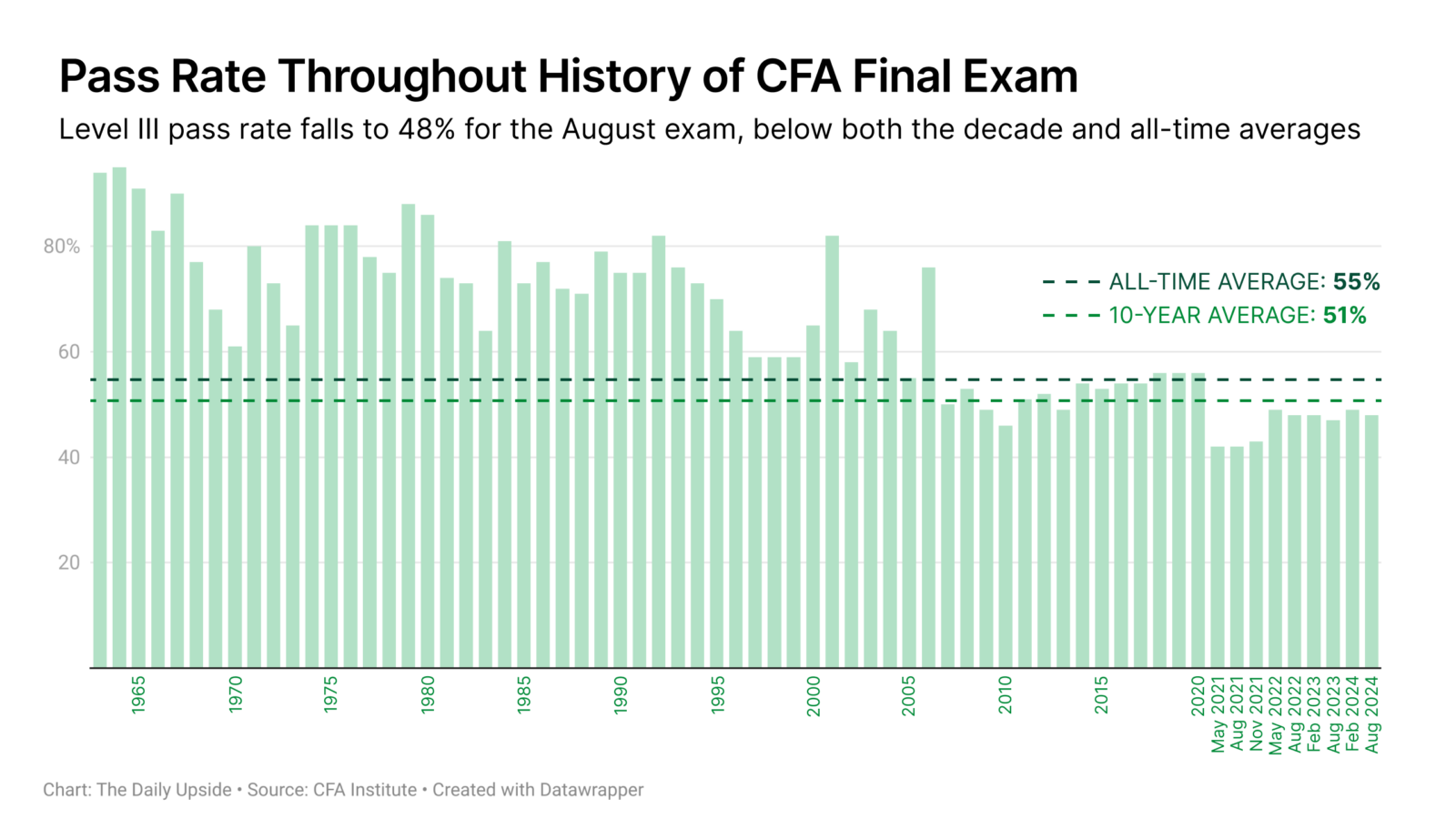Good morning.
For some, the great wealth transfer can’t come soon enough.
A Reddit post titled “WTF is wrong with our parents?” made waves on social media for highlighting the wealth gap (and frustrations) between clients and their children. In it, the poster explained how he has “scraped and suffered” to afford a small home where he can raise two children and pay off a mountain of credit card debt. Meanwhile, the poster’s father and father-in-law have millions sitting in the bank.
Sure, avocado toast isn’t getting any cheaper, but the post does speak to the differences between millennials and boomers and the importance of open communication regarding financials, inheritance, and wealth transfers. What do you think: Should the ‘rents help out, or does this Redditor just need a better budget?
How Morgan Stanley’s AI Helped Close 100K New Clients This Year

AI may be your next rainmaker.
Morgan Stanley’s yearslong push to unveil new AI tools is finally helping attract new business and impacting its bottom line. The Wall Street investment bank reported record revenue and profits in its wealth management unit last week, racking up almost $64 billion in new assets in the third quarter alone. For those keeping track, it’s a 76% increase over the previous quarter and an almost 80% jump year-over-year. Executives have said it’s due in large part to new AI tech.
The initiative, called AI @ Morgan Stanley, includes a more efficient prospecting program and a note-taking tool, and is freeing up thousands of hours of time for the firm’s roughly 20,000 advisors. It’s arguably one of the most significant impacts AI has had on wealth management to date. “We understand now how to better match and understand individuals and their needs,” CFO Sharon Yeshaya said during an earnings call last week. “It’s really bearing fruit.”
Game, Set, Match
Morgan Stanley is using AI to match prospects with advisors through a program the company calls “human referrals.” (We don’t really get the name either.) By handing off prospects from call centers or websites to human advisors, the tool is streamlining what was traditionally a clumsy and ineffective process. Successful referrals have now doubled at the firm to over 100,000 year-to-date, Yeshaya said.
The AI program is just finding its footing at the firm, and will one day gather insights from ongoing conversations and interactions with prospects that will give employees an edge over competitors, according to CEO Ted Pick.
Awkward Years. The new tools are part of a larger AI push for some of the country’s largest brokerages. Morgan Stanley finished a rollout of Debrief in June: The software program sits on an advisor’s desktop, records Zoom calls with clients, and drafts follow-up emails. Automating these time-consuming tasks is giving advisors the breathing room they need to bring in new business. Rival JPMorgan Chase unveiled a chatbot earlier this year that can help with writing and summarizing documents, and can be used in place of analysts.
“Morgan Stanley has been one of the early adopters,” said Sindhu Joseph, CEO of the AI wealthtech company CogniCor. Since the Debrief tool was announced, advisor interest in new tech tools has skyrocketed, she said. “[AI] went from a nice-to-have to a fear-of-missing-out.”
A Morgan Stanley financial advisor in Houston, cited in a press release, said Debrief freed up about half an hour of time per client meeting. That extra time has helped Morgan Stanley grow client assets to a record $6 trillion. “The industry is going to look very different in the next few years,” Joseph said.
7 Ways To Position Yourself To Serve High-Net-Worth Clients

Let’s be honest 一 any financial advisor wants to entice the really big fish: high-net-worth clients.
Fortunately for those with a growth mindset, it’s a good time to be in the business, as the number of high-net-worth individuals (those with a net worth of $5 million+) continues to rise globally.
As a primer, Commonwealth has broken down The 7 Ways To Position Yourself To Serve High-Net-Worth Clients. Inside you’ll find key strategies to attract discerning clients, such as:
- Offering diversified financial strategies
- Leveraging professional designations
- Putting tech to work as a service tool
Can Political ETFs Find Common Ground Ahead of November?
Financial advisors are about to face the inevitable. No, not the results of the election itself, but client reactions to it.
It’s natural for investors to want to talk about an important political event, and how it impacts their financial situation. Advisors can provide value by helping navigate difficult conversations about policies and the economy.
There are also a handful of exchange-traded funds that could interest politically-driven investors. Many of them track stocks considered to be aligned in one way or another with either of the major US political parties, and could come in handy (even just as icebreakers) when chatting geopolitics with clients.
Hot-Button ETFs
There are a handful of political ETFs that would jump out, and they include an offsetting pair from issuer Unusual Whales/Subversive Capital. The Democratic Trading ETF (NANC) and Republican Trading ETF (KRUZ) — named for Rep. Nancy Pelosi and Sen. Ted Cruz — are designed to give investors exposure to the same publicly traded companies that sitting members of Congress (and their families) have reported to be invested in.
Pelosi, along with her husband Paul, is known for making winning stock picks, and Cruz’s investments are some of the most-watched on Capitol Hill. Interestingly enough, they actually have many common holdings, including Nvidia and Microsoft. Apparently, those Magnificent Seven members appeal to both sides of the aisle. There are also two other prominent funds:
- The Democratic Large Cap Core ETF (DEMZ) is one of the first investment products that “strives to replicate the S&P 500, without the GOP.” The fund tracks only companies on the S&P 500 that have made over 75% of their political contributions to Democratic causes and candidates.
- The American Conservative Values (ACVF) ETF is an actively managed diversified large-cap core ETF that avoids companies “hostile” to conservative views while investing in firms that meet its conservative criteria, according to its website. In other words: This is the politically-tinged fund with exposure to Exxon.
Surprise, surprise: Both funds hold significant names in the Mag 7. If these ETFs can find common stocks to invest in, can’t we all?
Filibuster, Of Sorts? Just before year-end tax and financial planning begins, client sentiment about the election could take center stage. Even though advisors would probably rather debate the virtues of a 60/40 portfolio, don’t sidestep important conversations with clients — the markets often don’t react as we expect, which makes post-election client communication even more important.
Keep in mind that these concerns are usually fleeting, and will likely be around for as long as the tenure of former President William Henry Harrison. (His term lasted only 32 days, after he insisted on giving his two-hour inaugural address on a freezing day without a jacket.)
That’s advice that shouldn’t be recommended by anyone.

ETF Spotlight: Mid-cap companies fill a sweet spot between high-beta small caps and mature, slower-growing large caps. Learn more about Virtus’ high conviction names in their Mid-Cap ETF (KMID).
CFA Final Exam Success Rate Drops to Below 50%

The results are in, and it’s safe to say the CFA final exam is by far one of the most difficult tests on the planet.
Just 48% of test takers passed the August Level III exam, meaning the pass rate for the notoriously taxing final level of the chartered financial analyst exam has fallen further below the decade average of 52%. While the figures aren’t exactly encouraging, the pass rate is continuing an upward improvement from the historic lows seen during the pandemic. The latest data also found that candidates had less success if they delayed taking the exam.
Not Always Impossible
When the CFA first started offering the exam in 1963, almost everyone got through it successfully. The debut test had an impressive 94% passing rate, which somehow only increased the next year. Since then, there have been peaks and valleys, but the passing rate has been in a general decline. The all-time average sits at just 55%.
So what’s changed? CFA chief product advocate Rob Langrick said today’s exams are no more or less difficult than when they debuted, but the candidate population has grown.
“Our first sitting was a small, invite-only group,” he told The Daily Upside, adding that most were above the age of 30 and native English speakers. “Pass rates have trended down,” he said, as the company expanded globally to over 100 markets and eased exam eligibility to let in other industry professionals and students.
Because of that, the CFA isn’t anticipating a return to the initial pass rates.

Practice Makes Perfect. Kudos to anyone who even shows up on exam day. They’ve passed the already-challenging Levels I and II and are attempting to show their skills on a test that requires at least 300 hours of prep time, if not more:
- Roughly 17,000 people took the most recent Level III exam, and 55% of first-time testers passed, according to the CFA.
- However, candidates who had deferred their tests one or more times achieved a lower passing rate of 35%.
Interruptions in the study process are hard to overcome, Langrick said. Candidates often say “external obligations” like work and personal commitments can get in the way.
“These tend to crowd out their study plan,” Langrick said. “Sticking to a study plan is the single most important ingredient for exam success.”
Extra Upside
- Middle Kingdom: Wealthy European families set up offices in Hong Kong.
- On the Hunt: Rockefeller Capital Management lures almost all of Merrill Lynch team that managed $1.8 billion in assets.
- Into the Breach: Second Fidelity hack this year highlights threat of cybercriminals in wealth management.
- Two-Year Bull Run: The S&P may be on a tear, but some ETFs tracking the index could be better.
- Going the Distance: Wealthtech firm Farther secures $72 million in latest funding round.
- A Golden Opportunity. The number of high-net-worth individuals around the world 一 those boasting a $5 million+ net worth 一 is on the rise. The good news for wealth managers: Commonwealth has hammered out the strategies to win more HNW clients in one straightforward guide. Download the strategies for free here.*
* Partner
Advisor Upside is edited by Sean Allocca. You can find him on LinkedIn.
Advisor Upside is a publication of The Daily Upside. For any questions or comments, feel free to contact us at advisor@thedailyupside.com.

